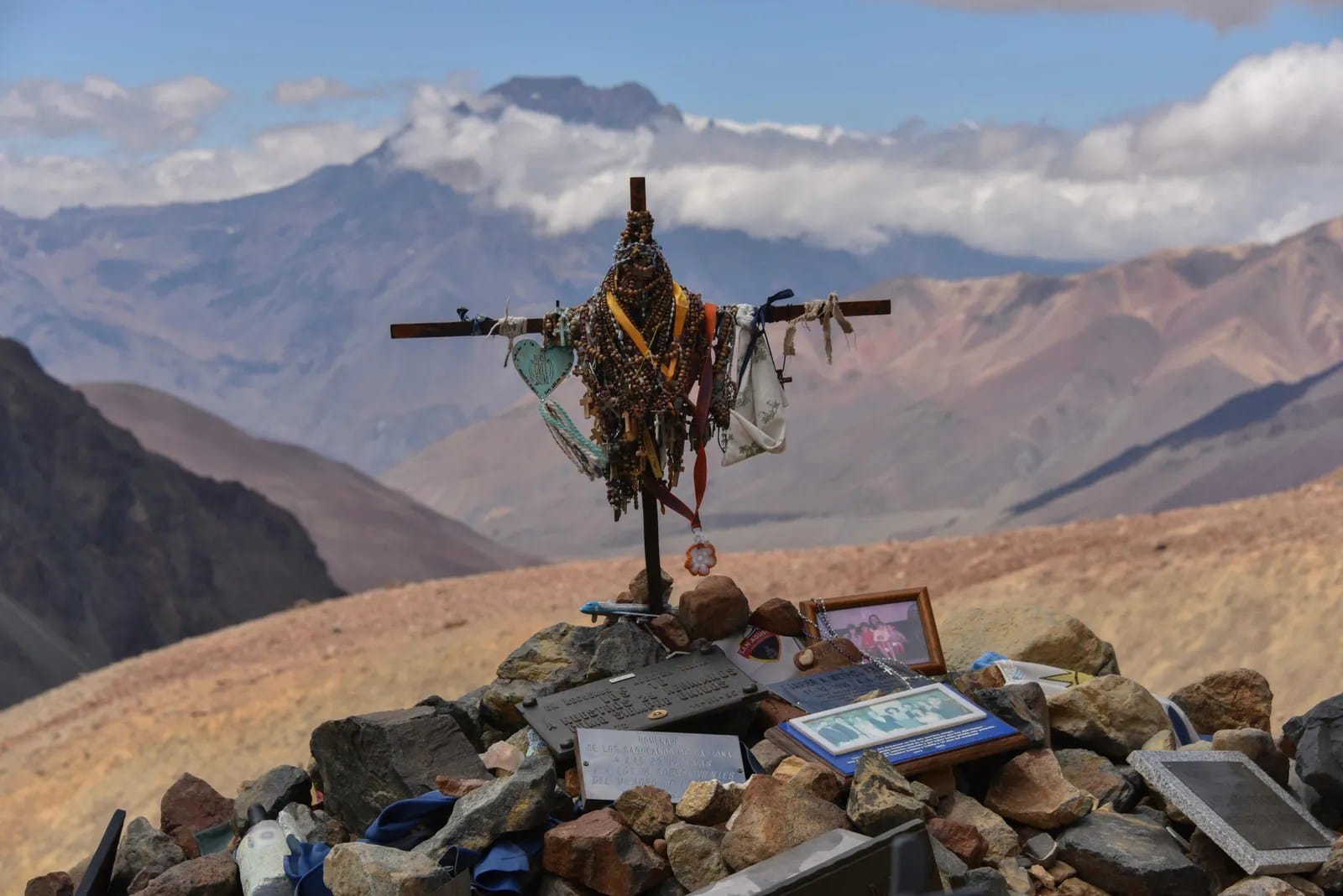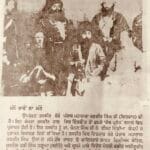This isn’t just a survival story. It’s a story of resilience, faith, unimaginable choices, and the enduring strength of the human spirit. It’s the story of Uruguayan Air Force Flight 571, a tale etched in the unforgiving ice of the Andes Mountains, and brought to life in Piers Paul Read’s gripping book, Alive. Find out more about the Apostle’s Creed, which sustained some survivors, here.
72 Days on the Mountain: A Harrowing True Story
On October 12, 1972, Flight 571, carrying a Uruguayan rugby team, their families, and friends, slammed into a remote Andean peak. Of the 45 souls aboard, only around 32 initially survived the impact. They were stranded in a frozen wasteland, thousands of feet above sea level, facing sub-zero temperatures, the ever-present threat of avalanches, and dwindling supplies salvaged from the wreckage. The crash itself was merely the beginning of their ordeal. Imagine the terror, the disorientation, the dawning realization that rescue might never come. Alive attempts to capture the raw emotion of those first few hours and days, the chaos giving way to the grim reality of their desperate situation.
The Unthinkable Choice: A Pact Born of Despair
As days turned into weeks, the survivors organized themselves, rationing their meager provisions and working together to maintain morale. But the brutal Andean winter was relentless. Further tragedies struck in the form of deadly avalanches, claiming more lives. Then, ten harrowing days after the crash, facing starvation, they made the unthinkable choice: to consume the flesh of their deceased companions. It was a decision born of desperation, a grim pact to stay alive – a decision that would forever haunt them, but one that allowed them to live. This act, while understandably controversial, has been confirmed by many of the survivors and remains a central, albeit deeply disturbing, element of their story. Learn more about iconic figures like Babe Ruth.
A Perilous Trek: The Fight for Rescue
While hope flickered dimly, the survivors clung to the faint crackle of a small transistor radio. The news was devastating: the search had been called off. Presumed dead, they refused to surrender. Fueled by a desperate determination, two of the survivors, Nando Parrado and Roberto Canessa, embarked on a perilous ten-day trek across the treacherous Andean peaks. Their journey, a testament to human endurance, was fraught with danger: freezing temperatures, treacherous terrain, and the constant gnawing of hunger. Then, a miracle. They stumbled upon a Chilean huaso (horseman), the first person they had seen in 72 days. He listened to their incredible story and rode for help, finally bringing their ordeal to an end on December 22, 1972. Sixteen survivors were rescued, their story stunning the world. Their survival transcended mere chance; it was a testament to courage, resourcefulness, and unwavering faith. The world learned of their resilience, their hope amidst despair, and the powerful bonds forged in the face of unimaginable adversity.
“Alive”: Capturing the Human Spirit
Piers Paul Read’s book, Alive: The Story of the Andes Survivors, published in 1974, became a #1 New York Times Bestseller. It’s more than just a recounting of events; it’s an exploration of the human spirit under pressure. Based on extensive interviews with the survivors, Read captures the raw emotion, the physical struggles, and the psychological battles they faced. He delves into the moments of despair and the flickers of hope, the unwavering faith that sustained some, and the ethical dilemmas that continue to spark debate today. However, as with any account reliant on memory, especially of trauma, the book’s complete accuracy has been questioned. Some survivors have pointed out discrepancies, particularly surrounding the decision to resort to cannibalism and the portrayal of group dynamics. It’s important to remember that Alive offers one interpretation of events, filtered through both the survivors’ memories and the author’s lens. Ongoing research into the psychology of survival may further illuminate the complexities of their experience.
The Andes Survivors: More Than Just a Story
The story of the Andes survivors continues to resonate, inspiring books, films (including the 1993 film Alive and the recent Netflix film Society of the Snow), and ongoing scholarly discussion. It’s a story that challenges our assumptions about what humans are capable of, reminding us of the strength that lies within. The legacy of Flight 571 is one of resilience, hope, and the enduring power of the human spirit to overcome even the most unimaginable adversity. It’s a story that compels us to consider not only the physical challenges of survival, but also the ethical and moral dilemmas that arise when life hangs in the balance.
| Key Aspects of the Andes Survival Story | Details |
|---|---|
| The Crash | October 12, 1972; Uruguayan Air Force Flight 571; 45 passengers |
| Location | Remote Andes Mountains; high altitude; freezing temperatures |
| Initial Survival | Approximately 32 survived the initial impact |
| Challenges | Avalanches, starvation, extreme weather conditions |
| Controversial Decision | Survivors resorted to cannibalism to stay alive |
| Rescue Efforts | Nando Parrado and Roberto Canessa trekked for help |
| Rescue Date | December 22, 1972; 16 survivors |
| The Book “Alive” | Published in 1974; written by Piers Paul Read; #1 New York Times Bestseller |
| Film Adaptations | 1993 film Alive; Netflix’s Society of the Snow |
| Key Figures | Nando Parrado, Roberto Canessa, Piers Paul Read |
The story of the Andes survivors remains a powerful testament to human resilience and a subject of ongoing fascination and research. While Alive remains a widely read and impactful account, further exploration of survivor testimonies, documentaries, and ongoing research can provide a deeper understanding of this extraordinary event.
- Georgia Platform: A Southern Strategy, 1850s - March 31, 2025
- How many weeks is 40 days: Quick Conversion Guide for Accurate Results - March 31, 2025
- How many feet is 300 meters? 984 Feet: Understand Length Conversions Easily - March 31, 2025
















